 WHAT IS BIRKAT HABAYIT? Birkat HaBayit (Hebrew: ברכת הבית, literally meaning blessing of the home) is a prayer that can often be found inscribed on wall plaques as well as on Hamsa Hand amulets. The blessings origins is debated however it's become very common place in many Jewish homes as well as non-jewish homes in Israel and around the world. WHERE IS THE BLESSING FOR THE HOME PLACED? The Hamsa's or plaques with the blessings are usually featured at the entrance of Jewish homes or next to windows, yet it's also found on key-chains holding the keys to the home. Birkat HaBayit plaques or Hamsa's are often adorned in creative ways and given as housewarming gifts. There are different versions of the prayer and the text is commonly written in either Hebrew or in English and increasingly in other languages as well!.
BIRKAT HA BAYIT - BLESSING FOR THE HOME ENGLISH: Let no sadness come through this gate. Let no trouble come to this dwelling. Let no fear come through this door. Let no conflict be in this place. Let this home be filled with the blessing of joy and peace. The Hamsa Hand world is fascinating :) You can read more about the symbols i use in my art on on my website blog such as articles about the Hamsa Hand, The Eye, The Fish, The Dove, The Eagle, The Double-Headed Eagle, The Tree of Life, The Chai, The Pomegranate, The Hebrew Letters and more!
0 Comments
In my artworks i am very much inspired by the Hamsa Hand symbol - and so, if you've reached my website and you're wondering what a Hamsa Hand is, then i've gathered some of the most common questions that i'm asked, in this blog post to give a quick and easy overview! If you'd like to read more about the origins and history of the Hamsa Hand symbol you can do so in my Hamsa Hand article here on my blog, where i've also written about the symbolic elements that are often seen within the Hamsa Hand! 1. WHAT IS A HAMSA HAND? The Hamsa Hand is a symbol in the shape of an open hand with five fingers. The Hamsa Hand shows the palm of the hand toward the viewer, and it is thought to be an amulet for good luck & protection from negative forces, such as the evil eye. The Hamsa Hand amulet is worn as jewelry, hung on walls in the home, in businesses, on front doors and is often given as a gift! 2. WHAT DOES THE WORD 'HAMSA' MEAN? 'Hamsa' comes from Arabic and means 'five' - it represents the 5 fingers of the hand. In Hebrew the word for 'five' is Hamesh, however the symbol is most commonly referred to using the Arabic term, yet kan also be spelled in different ways i.e. Khamsa. 3. WHAT DOES THE HAMSA HAND REPRESENT? The Hamsa Hand has many different cultural variations, but overall it's a positive symbol that represents protection from negative energies, promotes health, happiness, good luck, abundance, fruitfulness and good fortune. There is usually an eye in the palm as this eye is thought to protect against the evil eye (in hebrew it's called 'Ayin HaRa'). 4. DOES THE NUMBER 5 REPRESENT ANYTHING IN THE HAMSA? The five fingers have been connected in various ways in different cultures and religions. In Islam the Hamsa Hand represents the five pillars of Islam. In Judaism the Hamsa Hand represents the five books of Moses. It's also associated with the five fingers that are connected to the five mudras, the five Buddhist teachings & the five human senses. 5. WHAT ARE THE DIFFERENT NAMES OF THE HAMSA HAND SYMBOL? Because of the Hamsa's different meanings and interpretations in different religions and cultures it is also called The Hand of Fatima (Islam), The Hand of Miriam (Judaism) & The Hand of Mary (Christianity). It is also sometimes known as 'The Healing Hand'. 6. DOES IT MATTER IF THE HAMSA HAND FACES UP OR DOWN? As you've probably noticed, sometimes the Hamsa Hand is pointing the palm upwards and sometimes it's facing downwards. Since it's not an exact science it's of course left to interpretations and different assigned meanings, but in general there is no difference and the symbol can be used in both ways! 7. WHERE DOES THE HAMSA HAND COME FROM? The Hamsa Hand can trace it's origins back to ancient times, to Egypt, various mythologies, religions and regions. The Hamsa Hand as we know it today is most commonly known in it's shape and form as a symbol originating in Mesopotamia (modern day Iraq) and North Africa & The Middle East. You can read more about it's origins and entrance in to the Jewish culture in my article about the Hamsa Hand. 8. WHY DO I SEE THE HAMSA HAND IN MANY YOGA STUDIOS? The Hamsa Hand symbol has been increasingly adopted in the Western World where it's positive qualities and symbolisms of protection from negativity and evil forces resonates well with the modern day yoga practitioners. The Hamsa hand in Buddhism and Hinduism represents the chakras, the five senses and their different mudras- special hand gestures. These mudras are believed to re-direct energy flow throughout the body and the Hamsa Hand is therefore a natural fit in the Yoga practitioners world. 9. DO YOU NEED TO BE RELIGIOUS TO USE OR WEAR A HAMSA HAND? Not at all! The Hamsa Hand speaks to many people who enjoy it either for it's positive qualities as a good luck charm or as part of their own culture or because they like the different meanings and artistic expressions of the Hamsa Hand. 10. WHY DO YOU THINK THAT THE HAMSA HAND HAS BECOME POPULAR IN THE WESTERN WORLD? In the Western World the Hamsa Hands presence is increasingly felt as it can be worn or shown off in the home, also by non-religious people. Religious, spiritual or not, the Hamsa Hand seems to satisfy a human need to protect one-self and loved-ones from bad energies and jealousy and it speaks to people's inner wishes to connect with the positive aspects such as good luck, prosperity, health and protection. It has become a popular symbol within fashion and popular culture too because many celebrities and people who - with the rise of social media- are very much in the eye of the public. This may increase the need to connect with the protective aspects of the Hamsa Hand symbol. Meghan Markle, the duchess of Sussex, has even been spotted wearing Hamsa Hand jewelry. You can read more about the symbols i use in my art on on my website blog such as articles about the Hamsa Hand, The Eye, The Fish, The Dove, The Eagle, The Double-Headed Eagle, The Tree of Life, The Chai, The Pomegranate, The Hebrew Letters and more! Feel free to write to me through my website if you have any questions you're curious about.
These Seven Species are considered special and holy and there are unique blessings for each species! Just as the vine and the olive, the fig is regarded as one of the staples of life and it is considered to be symbol of abundance and prosperity. WHEN ARE THE SEVEN SPECIES EATEN? The species are most traditionally consumed on Tu Bishvat - the Jewish "New Year for Trees" which is usually taking place on the 15th of the Hebrew month of Shevat that often takes place in January or February. In modern Israel trees are planted in celebration on this day. The species are also eaten on Sukkot, the "Feast of Tabernacles, an agricultural festival that originally was considered a thanksgiving for the fruit harvest, and on Shavuot, the "Festival of Weeks" that is associated with the grain harvest. THE FIG IN THE BIBLE The fig is mentioned in Genesis in the story of Adam and Eve. After eating fruit from the Tree of Knowledge in the Garden of Eden, which they had been commanded not to do by God.... 'the eyes of them both were opened, and they knew that they were naked and they sewed fig-leaves together..' thereby clothing themselves with fig leaves. In most Western art the forbidden fruit is depicted as an apple hanging on an apple tree, however the religious scholars debate that the fruit was rather a fig from a fig tree. In the Michaelangelo painting from the Sixtine Chapel in Rome, the tree is depicted as a fig tree. THE FIG SYMBOL IN MYTHOLOGY & ART In Greek & Roman mythology figs have been associated with Dionysus (Bacchus/god of wine & song) and Priapusin (a satyr) symbolizing sexual desire. The figs connection with sexuality is closely connected to its featuring in creation stories and its symbolism to fertility & fruitfulness. The Romans used the fig-symbol to express a sign of fruitfulness-blessing and as a symbol to ward off curses and to protect from the evil eye by showing a 'mano fico' (fig-hand). Because they associated the fig with female fertility and eroticism they used the gesture against the evil eye. The Hamsa Hand is also an amulet that is believed to wards off negative and evil spirits as well as to protect against the evil eye, you can read more about these on my blog. The Romans believed that the obscenity of the sexually related hand gesture would be a distraction to evil, and that demons would flee or be repelled by the sight of the gesture reflecting sex and reproduction. This hand gesture is however highly offensive today in many cultures. THE FIG - AN HONORABLE PRIZE WITH HEALTH BENEFITS! The early Greeks valued the figs, and used figs (the leafs/foliage and the actual fruits of the fig tree) as an honourable prize to present winners with, of different competitions. The fig was prized and thought of as a rich, delicious food, as well as a medicine. Dioscorides, The Greek herbalist devoted 3 chapters of Book I of the De Materia Medica solely to figs (I. 183–186.) The fig had a good reputation among herbalists in medieval times. Consuming the fig fruit was thought beneficial to the throat and lungs, it removed toxins from the kidney and could counteract poisons and reduce inflammations and much more. THE FIG LEAF CAMPAIGN AND MODESTY IN ART Greek and roman classical statues that depicted heroic nudes and naked bodies continued to be appreciated during the late empire, yet with the rise of Christianity and the influence of the church, the nudes of the classical antiquity began to symbolize a "pagan" past and idolatry, within medieval Europe and the Byzantine Empire. Nudity began to play a lesser role than before. Centuries later during the Renaissance, artists were again captivated by the ideal ancient forms and they began to revive classical values, restoring the nude figure as a symbol of beauty and ideal. The artists began to fill palazzi with frescoes and nude statues. As the Italian catholic church grew stronger, religious forces began to resist the freedoms taken by artists. And the 'fig-leaf campaign' was born. The Vatican began ordering reforms which included censorship of nudity in art. To deal with 'the problem', statues were covered with fig leaves and paintings had leafs or cloths added on the nude parts of the bodies. The great Renaissance artist Michaelangelo's painting in the Sistine Chapel in the Vatican 'The Last Judgement' (1533-41) was not spared and was nude areas were painted over with loincloths, twice in the 1500s, and then again in the 1700s. The last many years much restoration work has been made in an attempt to restore paintings and sculptures, including on the Last Judgement were many loincloths have been removed. You can read more about the symbols i use in my art on on my website blog such as articles about the Hamsa Hand, The Eye, The Fish, The Dove, The Eagle, The Double-Headed Eagle, The Tree of Life, The Chai, The Pomegranate, The Hebrew Letters and more!
Feel free to write to me through my website if you have any questions or elements you're curious about. MY JUDAICA IN THE SPOTLIGHT Today an interview with me was published on a lovely website called Judaica In The Spotlight. Their website helps showcase Jewish artists and Judaica art, and i recommend visiting their website! :) The interview is about my Hamsa Hand artworks and some of my inspiration and judaica / symbolic influences.
Enjoy! :) TAKE ME TO THE INTERVIEW! |
MAY-BELL
|




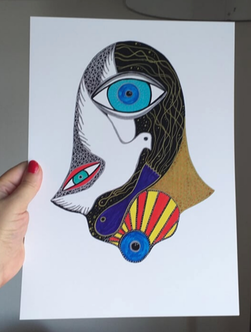











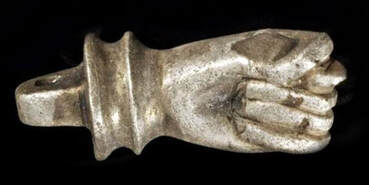



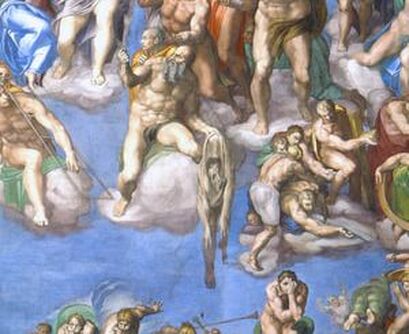
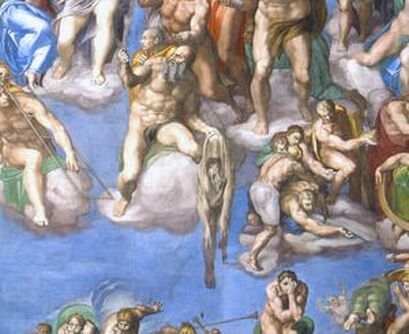

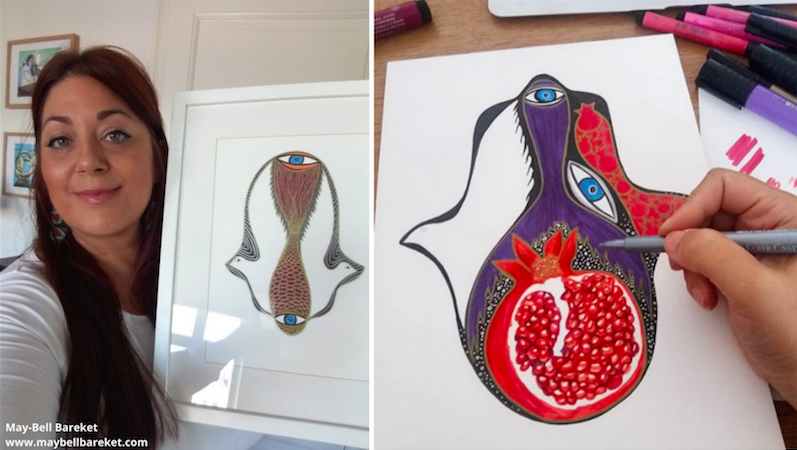
 RSS Feed
RSS Feed
